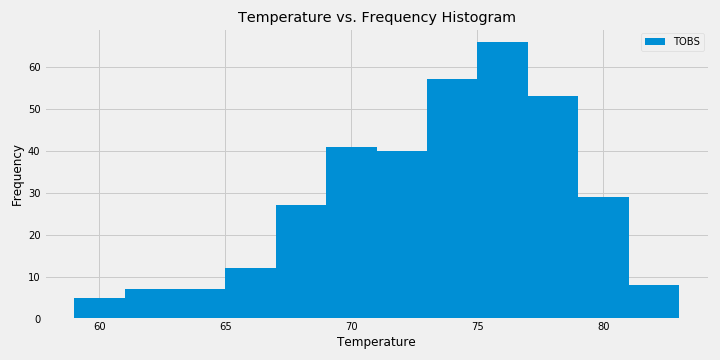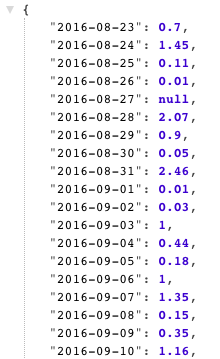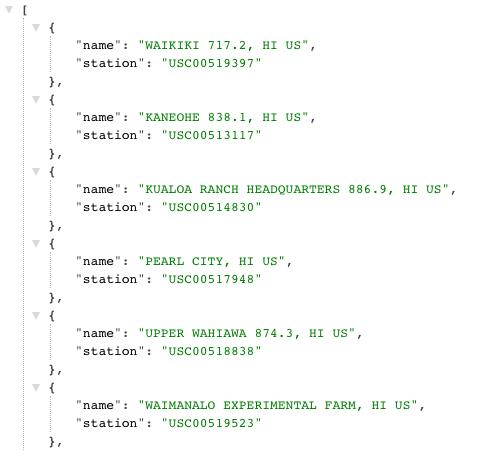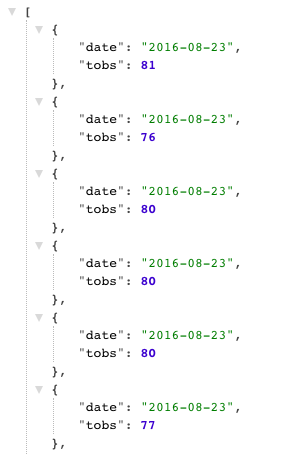Climate Analysis and Data Exploration of Climate Database Using Python (Pandas, Matplotlib), SQLAlchemy (ORM Queries) and Flask
Use Python and SQLAlchemy to do basic climate analysis and data exploration of your climate database. All of the following analysis should be completed using SQLAlchemy ORM Queries, Pandas, and Matplotlib.
- Design a Query to Retrieve the Last 12 Months of Precipitation Data Selecting Only the
dateandprcpValues - Save the Query Results as a Pandas DataFrame and Set the Index to the Date Column & Sort the Dataframe Values by
date - Use Pandas Plotting with Matplotlib to
plotthe Data - Use Pandas to Calculate the Summary Statistics for the Precipitation Data
- Design a Query to Show How Many Stations are Available in the Dataset
- List the Stations and Counts in Descending Order
- Which Station Had the Highest Number of Observations?
- Using the Station ID from the Previous Query, Calculate the Lowest Temperature Recorded, Highest Temperature Recorded, and Average Temperature of the Most Active Station
- Choose the Station with the Highest Number of Temperature Observations
- Design a Query to Retrieve the Last 12 Months of Temperature Observation Data for this Station
- Plot the Results as a Histogram with
bins=12
- Use the
calc_tempsFunction to Calculate the min, avg, and max Temperatures for Your Trip Using the Previous Year's Data for Those Same Dates - Plot the min, avg, and max Temperatures from the Previous Query as a Bar Chart
- Use "Trip Average Temperature" as the Title
- Use the Average Temperature for the y Value
- Use the Peak-to-Peak (max-min) Value as the y Error Bar (yerr)
Design a Flask API based on the queries that have been developed.
- Use FLASK to create the routes
/api/v1.0/precipitation- Convert the Query Results to a Dictionary Using
dateas the Key andprcpas the Value - Return the JSON representation of the dictionary
- Convert the Query Results to a Dictionary Using
/api/v1.0/stations- Return a JSON list of stations from the dataset
/api/v1.0/tobs- Query for the dates and temperature observations from a year from the last data point
- Return a JSON list of Temperature Observations (tobs) for the previous year
/api/v1.0/<start>and/api/v1.0/<start>/<end>- Return a JSON list of the minimum temperature, the average temperature and the max temperature for a given start or start-end range
- When given the start only, calculate
TMIN,TAVG, andTMAXfor all dates greater than and equal to the start date - When given the start and the end date, calculate the
TMIN,TAVG, andTMAXfor dates between the start and end date inclusive



.png)



